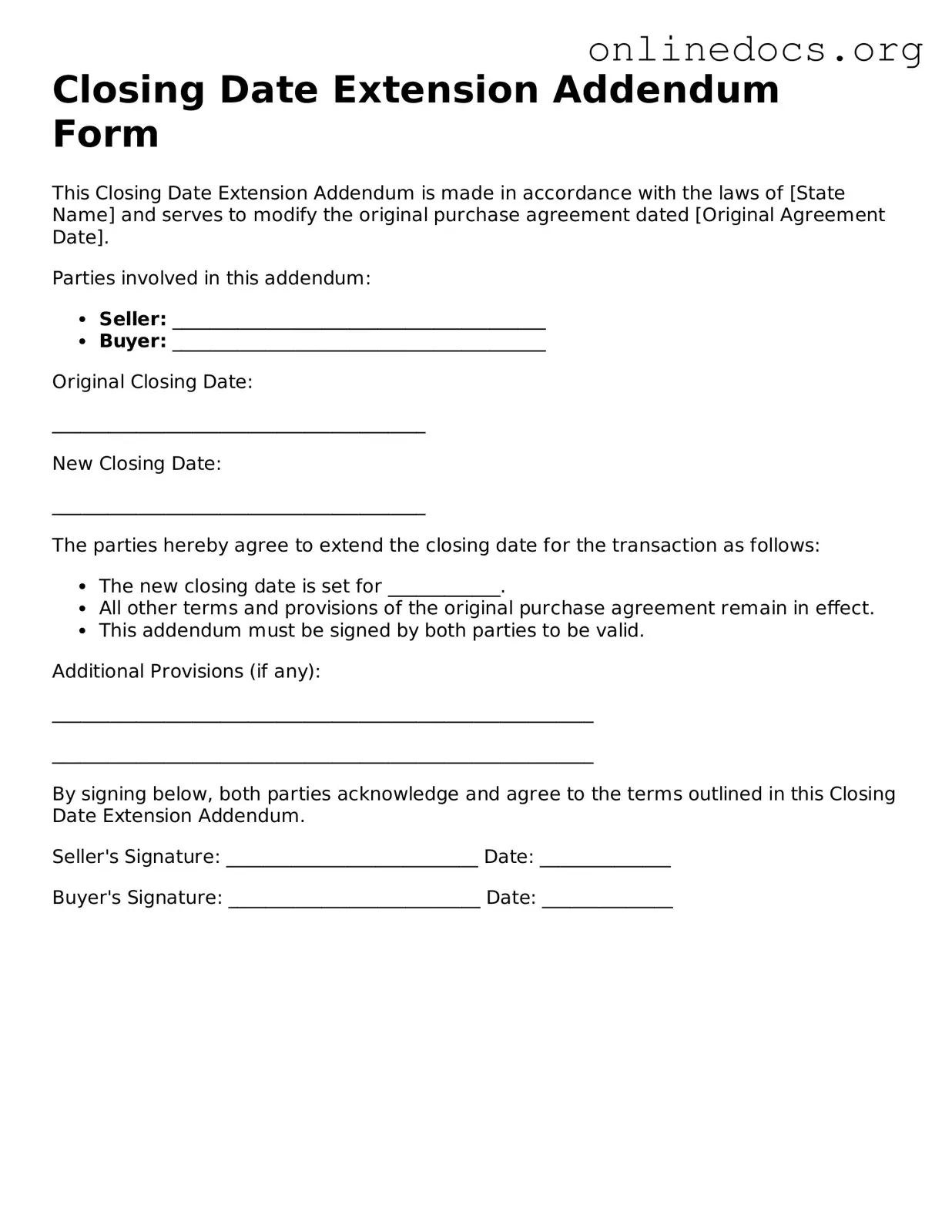Filling out the Closing Date Extension Addendum Form can be a straightforward process, but many individuals make common mistakes that can complicate matters. One frequent error is neglecting to include all necessary parties' signatures. Each party involved in the transaction must sign the addendum to ensure that the extension is valid. Without these signatures, the document may not hold up in a dispute.
Another common mistake is failing to specify the new closing date clearly. The form should explicitly state the new date to avoid confusion. Ambiguities can lead to misunderstandings, which may result in further delays or complications. It is essential to be precise and unambiguous when entering this information.
Some people overlook the importance of including a reason for the extension. While it may seem unnecessary, providing a brief explanation can help clarify the situation for all parties involved. It also demonstrates good faith and transparency, which can be beneficial in maintaining positive relationships during the transaction.
Inaccurate or incomplete information is another mistake that can derail the process. Double-check all entries, including names, addresses, and dates. Even minor errors can lead to significant issues later on. Taking the time to review the form carefully can prevent unnecessary complications.
Additionally, individuals sometimes forget to attach any required documentation. If the extension is based on specific circumstances, such as repairs or financing issues, relevant documents should accompany the addendum. This additional paperwork can support the request and provide context for the extension.
Failing to communicate the extension to all relevant parties is another pitfall. Once the addendum is completed, it is crucial to ensure that all parties involved in the transaction are informed. This includes real estate agents, lenders, and any other stakeholders. Clear communication helps prevent confusion and keeps everyone on the same page.
Finally, people may not keep a copy of the signed addendum for their records. Maintaining a copy of all documents related to the transaction is essential. This practice not only helps in tracking the progress of the deal but also provides a reference in case of disputes. Proper documentation is a key element in any real estate transaction.
